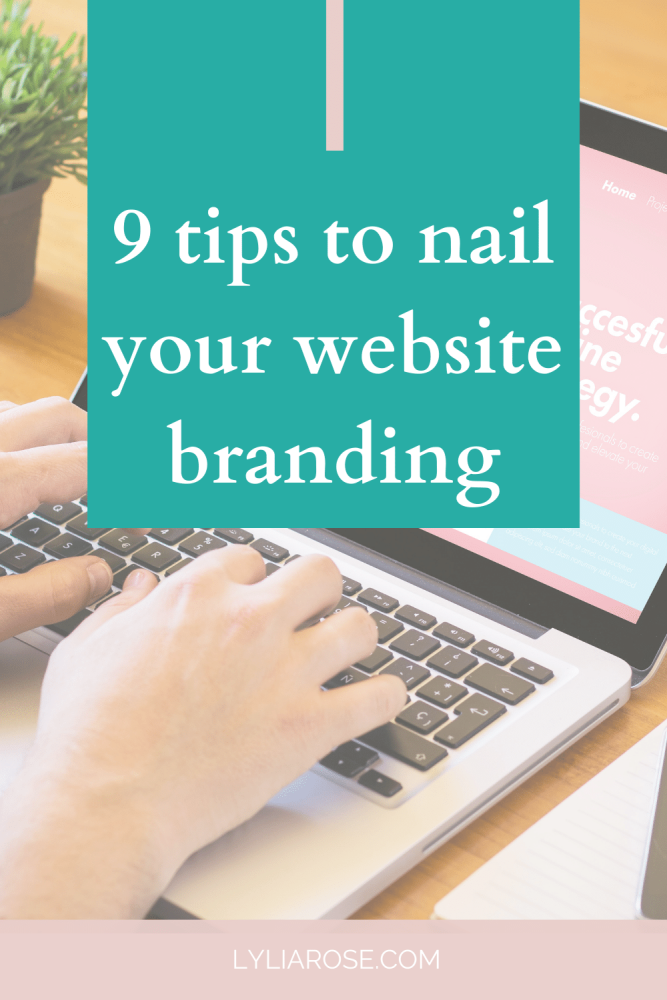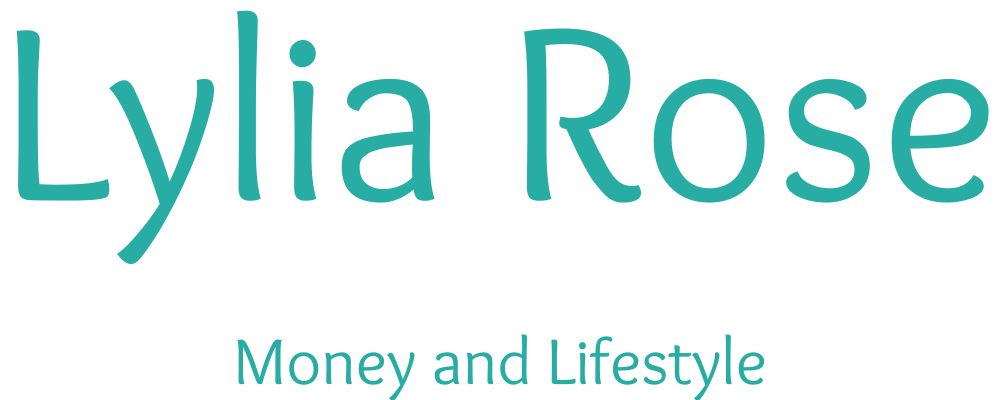9 Tips to Nail Your Website Branding
Posted on
A distinctive website brand identity is essential for any business. For startups and growing companies, branding can mean the difference between success and failure. While your brand voice will evolve over time, it’s crucial to establish a branding strategy from the outset.
Your website branding plays a major role in first impressions. Within seconds, visitors decide whether to stay or leave. A well-designed, visually appealing website enhances trust, increases engagement, and turns leads into customers.
This guide covers 9 website branding tips to help you create a strong online presence.

What is Website Branding?
Website branding is the process of creating a unique and memorable identity for your website that reflects your business, values, and target audience.
It includes key visual and messaging elements such as:
- Logo design – The face of your brand, used consistently across all platforms.
- Colour scheme – Colours influence emotions and should reflect your brand personality.
- Typography – Fonts impact readability and brand perception.
- Imagery and graphics – High-quality visuals that reinforce your brand message.
- Tone of voice – The way you communicate with your audience in content and messaging.
- Website layout and user experience (UX) – A smooth and intuitive site keeps visitors engaged.
A strong website brand helps businesses:
- Build trust and credibility with their audience
- Stand out from competitors
- Improve user engagement and conversions
- Reinforce brand recognition across digital platforms
Your website is often the first impression potential customers have of your brand, so making it consistent, professional, and visually appealing is key to long-term success.
Why Website Branding Matters for Small Businesses
If you run a small business, your website is one of your most powerful tools for attracting and retaining customers. Without clear and professional branding, visitors may leave your site, unsure of what your business offers or why they should trust you.
Here’s why website branding is crucial for small businesses:
- First Impressions Matter – A well-branded website makes your business look credible and trustworthy.
- Brand Recognition – Consistent use of colours, logos, and fonts makes your business more memorable.
- Customer Connection – A clear brand identity helps you connect with your target audience and communicate your values.
- Marketing & SEO Benefits – A well-branded website improves user engagement, which can help with search rankings.
By investing in professional website branding, small businesses can compete with larger brands and establish a strong online presence.

Retro branding kit for small business
9 Website Branding Tips for a Strong Online Presence
1. How to Identify and Target Your Website Audience for Better Branding
The primary task for a new business owner is to define the target audience for the product or service that you offer. Once you have a clear understanding of your target market, your marketing efforts will fall into place. Whether you sell a service or a product, whether your market is strictly local or you want to attract attention on a broader scope, your website should be easy to navigate, logically organised and deliver your message loud and clear.
Don't try to be everything to everyone. Instead, focus on what you believe to be your mission, and set yourself apart by the way you define your brand. There are a variety of ways to hone in on that message. You might conduct some initial focus groups to determine what ideas resonate most clearly with potential customers. Also, investigate your competition, and develop an individual niche identity.
Understanding your target audience is the foundation of strong website branding. Before designing your website, ask yourself:
- Who is my ideal customer?
- What problems does my product or service solve?
- What emotions do I want my brand to evoke?
Actionable Tips:
✔ Conduct audience research and create buyer personas.
✔ Analyse competitors to identify branding gaps.
✔ Tailor your website messaging and visuals to match your audience’s needs.
2. How to Create a Unique Brand Voice for Your Website
Consider your goals and create a definitive picture of what the company will be in five years. Communicate that vision. Always speak directly to your audience. Be mindful of the characteristics of your target audience. It is those prospective clients and customers that will help determine your proper tone.
Your website's written content should, of course, complement the visual content, and you will want to use both wisely. Let the content flow naturally from one topic to the next, and keep the format as simple and easy to navigate as possible. A San Diego agency can help refine your messaging to ensure it resonates with the right audience.
Your brand voice sets the tone for your website and marketing materials. It reflects your company’s personality and should align with your business goals.
How to Define Your Brand Voice:
- Professional & informative (e.g., finance, legal, health industries)
- Friendly & conversational (e.g., lifestyle blogs, personal brands)
- Bold & innovative (e.g., tech startups, creative industries)
✔ Keep messaging consistent across web pages, blog posts, and social media.
✔ Speak directly to your audience in a way that resonates with them.
3. Where and How to Use Your Logo for Maximum Brand Recognition
A dynamic logo is the emblem of your business, the most recognisable image that the public encounters. Think of it as the "secret sauce" that adds flavour to everything you do!
As you think about the message you wish to convey; experiment with graphics and with different fonts until the design "grabs your attention," and then pick colours that complement your style and your message. If you’re not sure about what colours or graphic combinations work best you can try a free logo design app where you can play around with different design options.
A well-placed logo increases brand recall and enhances trust. Ensure your logo appears in:
✔ The header and footer of your website
✔ Social media profiles and email signatures
✔ Blog post graphics and downloadable content
Pro tip: Keep logo placement consistent across platforms to strengthen brand identity.

4. Choosing the Right Colours to Strengthen Your Website’s Brand Identity
Colours are emotional triggers, and the best websites are colourful, dynamic and graphically inviting landscapes. Integrate colour into that landscape. You don't want to "shout" your message, but neither do you want website visitors to get lost in a sea of black and white words. Don't make visitors feel as if they are turning the pages in a book.
Think of colour in your digital marketing as one of the "road signs" that will help visitors by offering clear directions to navigate the site. Guide them to form a positive opinion about your company and its products and services.
Showcase your personality. Just as the world's most successful companies have instantly recognisable logos, a great website should be indicative of your brand identity and reflect its values. In other words, it should affirm your identity and create instant awareness.
Colours evoke emotions and shape brand perception. Choose a colour palette that aligns with your brand’s message.
Common Colour Associations:
- Blue – Trust, professionalism (tech, finance)
- Green – Health, sustainability (organic brands, wellness)
- Red – Energy, passion (food brands, fashion)
✔ Use contrasting colours for readability and visual impact.
✔ Stick to a primary and secondary colour scheme for consistency.
5. Why Brand Consistency is Key to Website Success
Every part of your website should reinforce your message. That message must be unified, strong, engaging and original, informative and complete. In short, it should be memorable and consistent, but never boring.
Just as your logo must be easily scalable, and the colours you use should enhance your overall image, your website must be graphically original and visually appealing.
The image you create and project will leave a lasting impression. Make that impression a good one. Integrate all the elements -- logo, colour, a tagline, graphics and typestyle, photographs and words to tell your story. Give voice to your message.
Branding needs to be consistent across your site, with a unified message. Take the time and the energy to design a site that will reflect your strengths and create a lasting impression.
Consistency across your logo, colours, fonts, and messaging creates a unified brand experience.
✔ Keep font styles and sizes the same across web pages.
✔ Use repetitive brand elements (slogans, taglines, colours).
✔ Align website branding with social media and marketing campaigns.

Boss Lady Business Owner Print
6. Creating a Website Content Plan to Support Your Branding Strategy
Define your goals, and then strive to develop a content strategy to meet those goals. Know that everything you do -- from your website to your logo and signage, from your business card to your social media posts -- will reflect the personality and impact the image of your company in the eyes of the public.
By developing a content strategy plan that is well-defined, purposeful, comprehensive and unified, you are a step ahead of the game. Be mindful of your goals, and adopt a content plan that is based on those goals.
A well-structured content plan enhances your website branding by keeping messaging consistent.
✔ Define a content calendar for blogs, emails, and social media.
✔ Use SEO-optimised blog posts to boost traffic.
✔ Maintain a consistent brand voice across all content.
7. How Great UX & UI Improve Website Branding and User Engagement
When it comes to your website, UX -- or the user experience -- is paramount. UI, on the other hand, refers to "user interface," meaning the way a website visitor is encouraged to navigate and interact. So, deliver a design that both addresses customer pain points or needs, as well as answering their questions and encouraging action of some sort.
Both are essential parts of the website, but the design principles are quite different. Consider the customer's journey, and attempt in every way possible to design a website that is "friendly." Be aware of the relationship between UX and UI, and understand the basic design principles of each.
Check out my recent blog post for more website and SEO acronyms.
A great user experience (UX) enhances branding by making navigation intuitive and enjoyable.
✔ Ensure a mobile-friendly design.
✔ Optimise website speed to reduce bounce rates.
✔ Use clear CTAs (Call-to-Actions) to guide users toward conversions.

8. Website Layout Best Practices to Enhance Branding and User Experience
A unique website design creates a favourable online presence that will enhance your company's image and fortify your brand. It is an essential tool in today's world of digital commerce. Whether yours is a simple design or a multi-page website that includes a blog and interactive features such as "how-to" videos or podcasts and instructional material depends on the type of company and its individual products or services.
Create a layout that is clear and easy to navigate, with a menu that clearly directs visitors to the information they seek.
Consider the purpose of each page, and make that purpose clear in the design. Some pages are informational, supplying visitors with needed information or data, while others promote action, such as signing up for a newsletter, scheduling an appointment, or placing an order.
Your website’s layout should prioritise clarity and engagement.
✔ Use a simple navigation menu for easy browsing.
✔ Place key information above the fold (visible without scrolling).
✔ Include whitespace to make content easy to digest.
9. How Website Functionality Impacts Branding and Conversions
Functionality is a vital part of website branding. The look and feel of your website, as previously pointed out, should be user-friendly and informative. It should generate trust and convey a sense of strength. It should quickly grab a visitor's attention, answer any questions the customer or client might have, and encourage action of some kind. That action might be immediate or for the future.
A dynamic, well-branded website is a powerful marketing tool. It not only creates a positive first impression, but reinforces the company's message and instils trust in the mind of a potential customer. It helps to boost interest, adds value, and leads to sales.
A functional website reinforces brand credibility and encourages customer action.
✔ Fix broken links and avoid slow-loading pages.
✔ Ensure forms, buttons, and checkout processes work smoothly.
✔ Test user experience regularly for improvements.
Website Branding FAQs
How do I brand my website on a budget?
Branding your website doesn’t have to be expensive. Start with a simple colour scheme, a free logo design tool, and a user-friendly website layout. Focus on consistent branding elements such as fonts, tone of voice, and high-quality images. Platforms like Canva and Google Fonts offer free resources to help create a professional look.
What are the key elements of a strong website brand?
A well-branded website includes:
- A recognisable logo that reflects your brand identity
- A consistent colour palette that evokes emotions and trust
- Carefully selected typography to align with your brand voice
- A clear brand message and unique voice
- High-quality images and graphics
- A smooth user experience (UX) and easy navigation
How can I make my website branding stand out?
To differentiate your brand online, use:
- A distinctive colour scheme and font pairing
- A unique brand voice that speaks directly to your audience
- Consistent messaging across all pages and marketing materials
- A strong visual identity with high-quality imagery and design
How often should I update my website branding?
While the core brand identity should remain consistent, refreshing your website branding every 2-3 years helps keep it modern and relevant. Minor updates, such as new imagery, font refinements, or improved layouts, can be done more frequently based on trends and user feedback.
Final Thoughts
Website branding is a critical part of business success. A well-branded website attracts visitors, builds trust, and increases conversions. By implementing these website branding tips, you can create a memorable and high-impact online presence.
Would you like to learn more about driving traffic to your website? Read my guide on how to increase your website traffic for expert insights.
Want to make more money from home, online or need a side hustle?
Find loads of ways to make extra money at home on my blog, as well as my favourite side hustle in my matched betting blog!
To get started, here are 60 ways to make money at home that I’ve tried and tested.
Follow these steps to make £1000 in one month at home.
Or, if you’re short on time, try these methods to make money in one hour.






